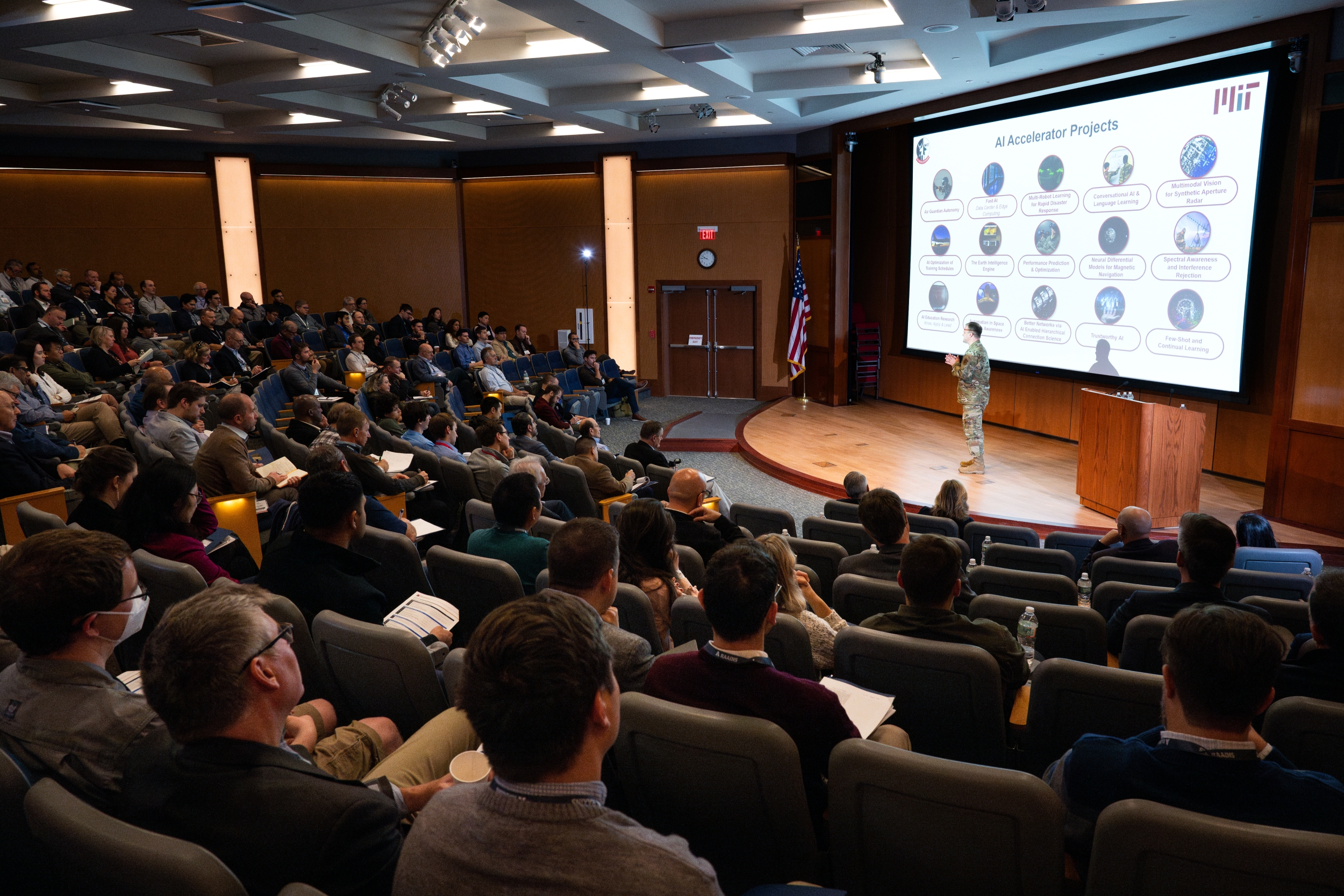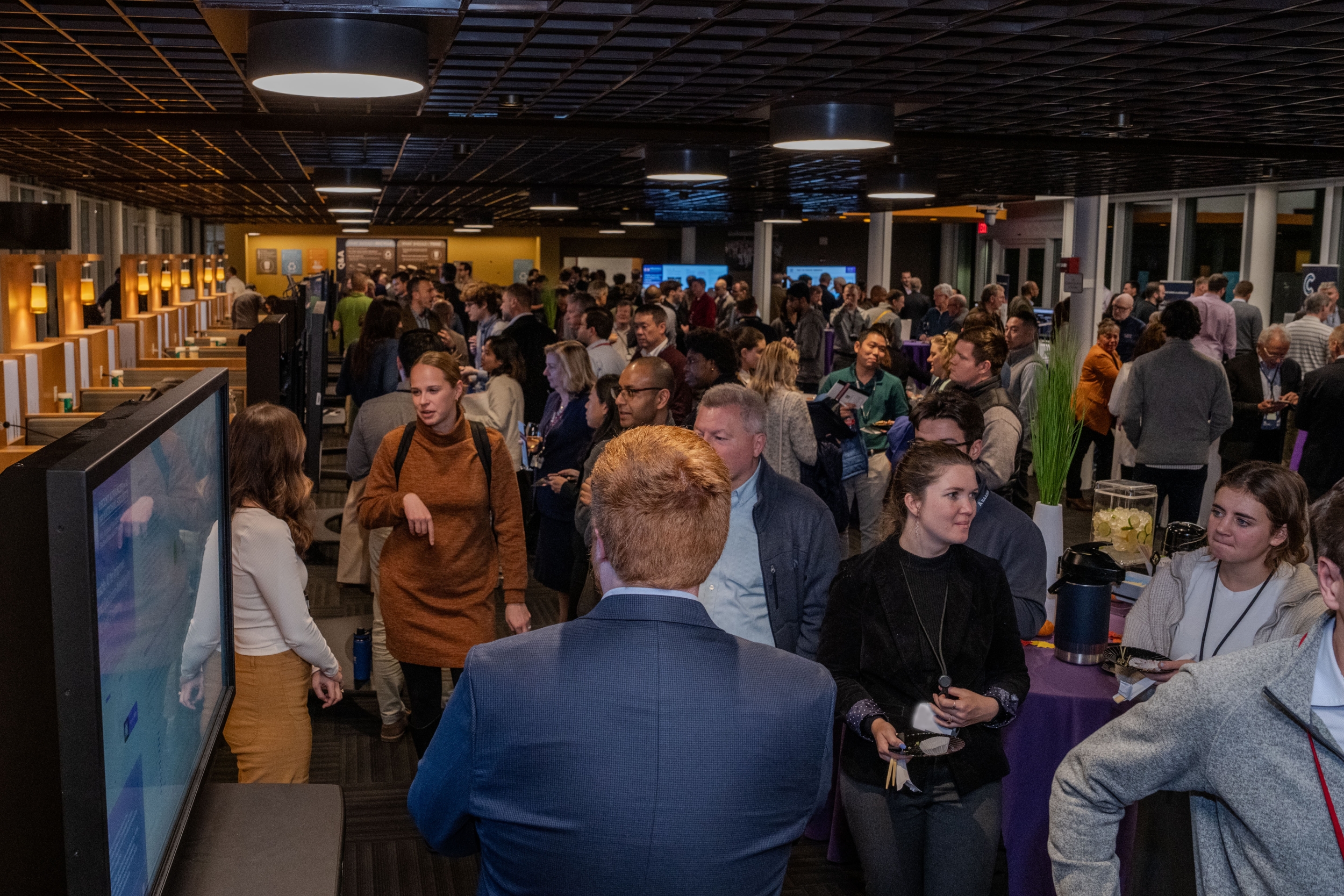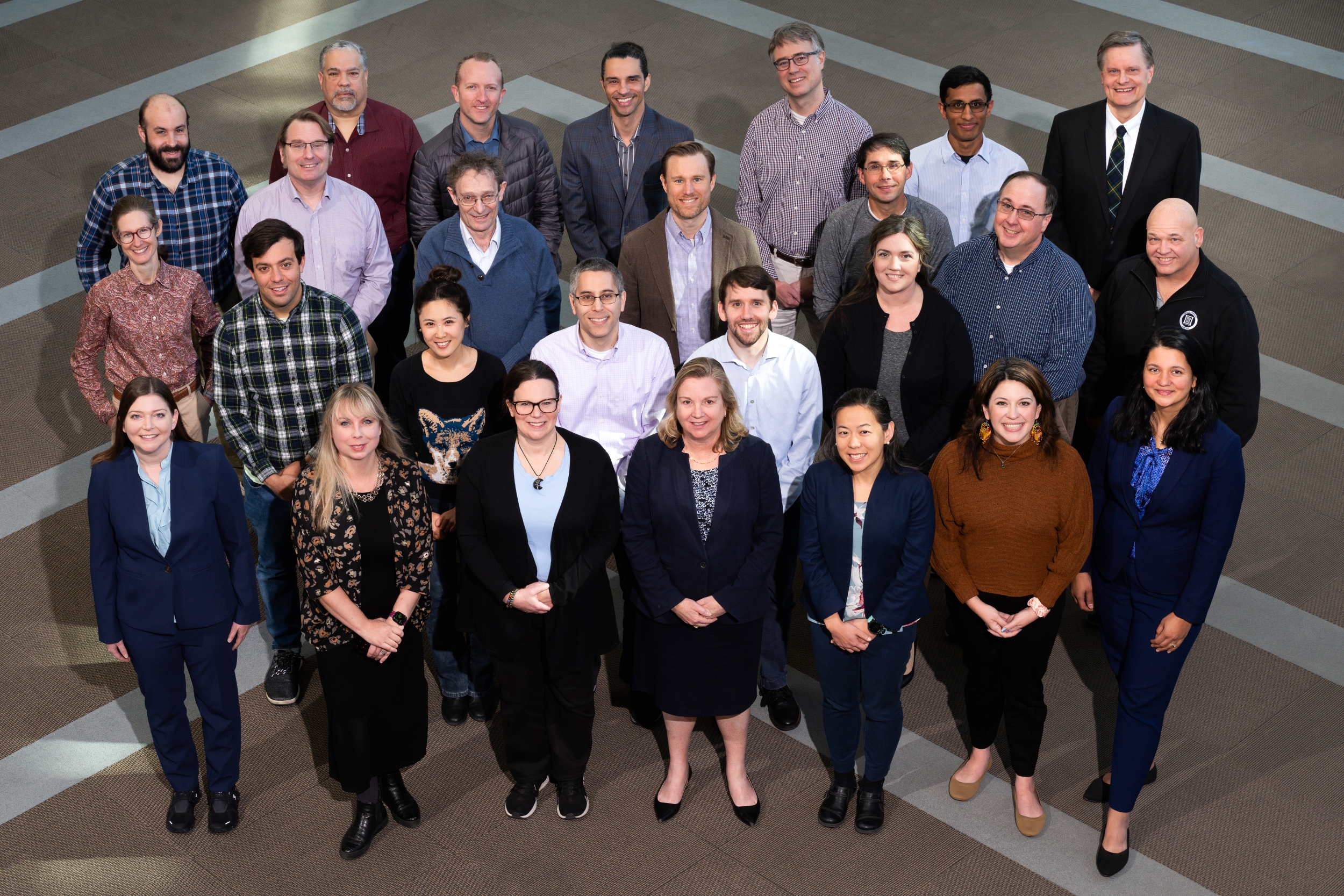RAAINS workshop considers the future of artificial intelligence
From November 13 to 16, 2023, Lincoln Laboratory hosted its fifth-annual Recent Advances in Artificial Intelligence for National Security (RAAINS) workshop. RAAINS brings together leaders in artificial intelligence (AI) across different sectors. This year's workshop had the theme of "reflections and futures of AI," with the goal of celebrating past successes, considering lessons learned, and charting new directions.
"AI is one of the most powerful technologies of our time, with potential to transform how the nation protects national security on a global scale," says Heidi Perry, the Laboratory's chief technology officer. "As a federally funded research and development center, the Laboratory is compelled to lead the community in understanding AI capabilities and shortcomings, while driving toward robust AI solutions. In collaboration with AI researchers across the Laboratory, the Technology Office designed and led the RAAINS workshop to educate, inform, and spark future thinking on AI technology transition, research advances, and future directions."
"The distinctive blend of courses, tours, industry night, poster sessions, presentations, and keynotes offered sets RAAINS apart from the myriad of other AI workshops and conferences," says Joseph Campbell, a Laboratory fellow within the Cyber Security and Information Sciences Division. "This year's workshop witnessed remarkable strides in the field, with significant advancements showcased in generative AI and the application of reinforcement learning. These developments underscore the workshop's commitment to exploring cutting-edge technologies and addressing key challenges at the intersection of AI and national security."
The first day of the workshop consisted of short in-person courses and tours of Laboratory facilities. Course topics included generative AI, AI ethics, test and evaluation of AI systems, counter–influence operations, AI for cyber, and human–machine teaming. According to workshop course co-chairs Andrew Curtis and Lin Li, all of the courses received high ratings from attendees. Attendees also had the opportunity to tour the Autonomous Systems Development Facility, Human–AI Performance Incubator Laboratory, and the STRIVE Center, and interact with the AI-Enabled Ultrasound for Field-Forward Medicine System.

The second day started off with a keynote from Colonel Garry "Pink" Floyd, the Department of the Air Force (DAF) director of the DAF—MIT AI Accelerator, an initiative bridging the Air Force, MIT, and commercial ventures to develop and ensure the ethical use of AI technologies for society and the nation. In his talk, Col. Floyd discussed how the Air Force is benefiting from partnership with industry and how academia is accelerating progress in the field of AI, helping to give the United States an edge in the defense sector. He also noted that a critical component of the AI Accelerator is the processing power enabled by the Lincoln Laboratory Supercomputing Center.
Talks throughout the day centered on AI technology transitions, featuring presentations on topics such as using deep learning for spacecraft component detection and using adaptive AI in real-world environments. Presenters also focused on autonomous AI systems in action, with lectures on subjects such as autonomous vehicles and flight-testing AI systems.
In the afternoon, a panel discussion shared government perspectives on AI and autonomy. Panelists included Col. Floyd, David Jin (DoD Chief Digital and Artificial Intelligence Office), Tim McKinnon (Intelligence Advanced Research Projects Activity), and Joseph Olive (Defense Advanced Research Projects Agency). The panel discussed questions such as, "Where do you think the national security community has been successful in transitioning AI?", "Which AI technologies have had the most impact and what are the barriers to improvement?", and "What has been the biggest change in the past five years in terms of AI and autonomy?"

In the evening, a networking reception featured 12 interactive posters displaying AI technologies from the Laboratory and seven booths set up by industry partners. According to Allan Wollaber of the Laboratory's AI Technology Group, one highlight of the reception was a live demonstration of Boston Dynamics' robotic dog, Spot. Using natural language instruction via ChatGPT, Spot performed tasks such as fetching objects. ChatGPT provided robotic instructions to Spot by interpreting human commands and perceiving the environment with the help of a vision model.
The networking reception also provided an opportunity for attendees to learn about the latest AI advances in industry. Several AI companies had the chance to attend RAAINS to showcase their work and identify opportunities to collaborate with government and academia.
Sessions on the final day dove deep into computing architectures and paradigms, algorithmic approaches that are advancing the AI frontier, and novel applications that hold great promise for future impact. The algorithmic approaches discussed ranged from physics-informed methods to generative AI, with applications in scientific discovery, sensor signal processing, Earth science, and AI for humanity. "The breadth of topics was a great testament to the broad impact that AI will have in the future, with groundbreaking research and demonstrations today," says Anu Myne, an assistant leader of the AI Technology Group.
The event concluded with a panel discussion on crucial needs in AI for national security, with discussions centering on how to navigate challenges posed by AI and how to protect the nation from the threats of emerging technology. Panelists included Evana Gizzi (NASA Goddard Space Flight Center), Stuart Harshbarger (National Security Agency), Jaret Riddick (Georgetown University Center for Security and Emerging Technology), Kimberly Sablon (Office of the Under Secretary of Defense for Research and Engineering), and Ted Tanner (BigBear.ai).
"The RAAINS workshop has become the yearly event for bringing together government, industry, laboratories, and academia to address some of the most pressing challenges and opportunities in the application of AI," says David Martinez, a Laboratory fellow in the Cyber Security and Information Sciences Division. "The workshop addresses the latest technological advances, prototype demonstrations, and implementation successes and failures, as well as provides a look toward the future. The future of national security depends on advancing cutting-edge technologies to stay ahead and deter peer-competitor conflicts."

"The 2023 RAAINS workshop drew over 500 participants across the four days of events. To pull off the ambitious itinerary, it took more than 140 staff from across the Laboratory to plan and execute every aspect of the workshop," says Chelsea Curran, an associate technology officer and chair of the 2023 RAAINS workshop. "Just as AI cuts across all parts of the Laboratory's R&D mission, RAAINS was truly a whole-of-the-Lab workshop. We are grateful to every member of the team for contributing their time and expertise to make RAAINS a success."

